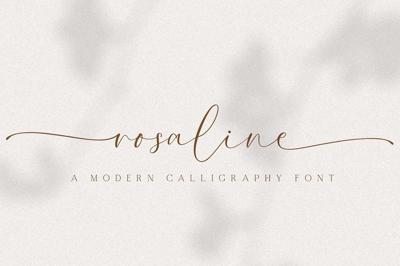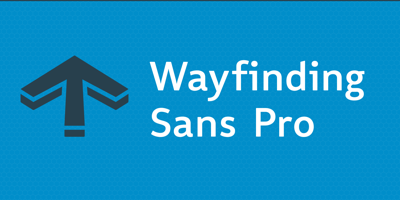Accessibility-Friendly Fonts: Inclusive Typography for All Users
Accessibility-Friendly Fonts: Inclusive Typography for All Users
Typography accessibility has evolved from a niche concern to a fundamental business requirement, with over 61 million American adults living with disabilities that affect how they interact with written content. As digital accessibility lawsuits increase and regulatory requirements strengthen, understanding and implementing accessible typography isn't just ethical imperative – it's essential for legal compliance, market reach, and sustainable business success.
The Americans with Disabilities Act (ADA) and Web Content Accessibility Guidelines (WCAG) now influence typography decisions across every industry, while assistive technologies continue advancing to serve diverse user needs. Companies that prioritize accessible typography gain competitive advantages by serving broader audiences while reducing legal risks and building stronger brand reputations.
This comprehensive guide examines typography accessibility from multiple perspectives, revealing which fonts and implementation strategies create truly inclusive experiences that serve all users effectively while maintaining design quality and brand consistency.
Understanding Typography Accessibility Challenges
Visual Impairments and Reading Difficulties
Visual accessibility encompasses much more than total blindness, including low vision, color blindness, light sensitivity, and various conditions that affect reading comprehension and text processing. Each condition creates specific typography requirements that must be addressed through thoughtful font selection and implementation.
Low vision affects approximately 4.2 million Americans, requiring typography with enhanced contrast, larger sizes, and clearer character differentiation. Color blindness impacts about 8% of men and 0.5% of women, necessitating typography strategies that don't rely solely on color for information communication.
Dyslexia and other reading disabilities affect millions of Americans who benefit from specific font characteristics including clear character shapes, adequate spacing, and reduced visual complexity that supports comfortable reading and comprehension.
Cognitive Load and Processing Differences
Typography accessibility extends beyond visual considerations to include cognitive load reduction and processing support for users with diverse learning differences, attention disorders, and cognitive disabilities.
Clear typography hierarchy, consistent spacing, and predictable layout patterns help users with autism, ADHD, and other cognitive differences navigate content more effectively while reducing mental fatigue and improving comprehension.
American businesses serving diverse populations must consider these cognitive accessibility factors alongside visual requirements to create truly inclusive typography experiences.
Assistive Technology Compatibility
Screen readers, voice recognition software, and other assistive technologies require typography that works seamlessly with technical accessibility features while maintaining human readability and aesthetic appeal.
Font choices affect how screen readers interpret and vocalize content, making technical compatibility a crucial factor in accessibility-focused typography selection. Certain fonts and implementation approaches work more effectively with assistive technologies commonly used by American disability communities.
WCAG Guidelines and Legal Compliance
Contrast Requirements and Implementation
WCAG guidelines specify minimum contrast ratios between text and background colors that ensure readability for users with visual impairments. Level AA compliance requires 4.5:1 contrast ratio for normal text and 3:1 for large text, while Level AAA standards demand even higher contrast levels.
These requirements significantly influence font selection, as some fonts maintain readability at lower contrast levels while others require higher contrast to achieve accessibility compliance. Understanding these relationships enables strategic font choices that support both accessibility and design goals.
Font weight and size also interact with contrast requirements, with bolder fonts often achieving accessibility compliance at lower contrast ratios compared to lighter alternatives.
Text Scaling and Responsive Design
WCAG requirements include support for text scaling up to 200% without loss of functionality or readability, creating specific challenges for typography implementation across different devices and contexts.
Accessible fonts must maintain character clarity and layout integrity when users adjust text size through browser settings or assistive technology preferences. This requirement affects font choice, spacing design, and responsive layout strategies.
American businesses must ensure their typography choices support these scaling requirements across all digital touchpoints to maintain legal compliance and user accessibility.
Information Architecture and Hierarchy
Accessibility guidelines require clear information hierarchy that enables users with diverse abilities to navigate content effectively using assistive technologies or alternative browsing strategies.
Typography plays a crucial role in creating accessible information architecture through consistent heading structures, clear visual hierarchy, and predictable layout patterns that support both visual and non-visual content navigation.
Dyslexia-Friendly Font Characteristics
Character Clarity and Differentiation
Dyslexia-friendly fonts prioritize clear character shapes that reduce confusion between similar letters like b/d, p/q, and n/u. These fonts often feature distinctive character designs that make letter recognition easier for users with reading differences.
Research indicates that fonts with clear ascenders and descenders, generous spacing, and consistent character proportions support reading comprehension for users with dyslexia while remaining comfortable for neurotypical readers.
OpenDyslexic and Specialized Options
OpenDyslexic represents a font specifically designed to address dyslexia-related reading challenges through weighted character bottoms and distinctive letter shapes that reduce common reading errors.
While specialized dyslexia fonts provide targeted solutions, research suggests that many mainstream accessible fonts offer similar benefits with broader design flexibility and professional appearance suitable for business applications.
Mainstream Alternatives with Dyslexia Benefits
Several widely-available fonts provide dyslexia-friendly characteristics while maintaining professional appearance and broad compatibility:
Verdana: Features clear character differentiation and generous spacing that supports readable comprehension for users with reading differences while maintaining professional credibility.
Arial: Provides clean, clear characters with minimal decorative elements that reduce visual complexity and support comfortable reading for diverse user populations.
Calibri: Offers humanist characteristics with clear letter shapes and adequate spacing that benefit users with reading challenges while maintaining contemporary professional appearance.
Vision-Accessible Font Selection
High Contrast and Character Recognition
Users with low vision require fonts that maintain character clarity at various zoom levels while providing sufficient contrast against background colors across different viewing conditions.
Source Sans Pro: Provides excellent character clarity with robust letterforms that maintain readability when enlarged while offering comprehensive weight options for creating accessible hierarchy.
Open Sans: Features clear character differentiation and generous spacing that supports low vision accessibility while maintaining professional appearance suitable for business communications.
Lato: Combines clarity with warmth through humanist design that provides accessible reading while creating approachable brand personality.
Size Flexibility and Scaling
Vision-accessible fonts must perform effectively across extreme size ranges from standard reading sizes to significantly enlarged text that users with visual impairments may require.
Fonts with excellent hinting and clear character construction maintain readability when scaled to large sizes without becoming pixelated or losing character definition essential for vision accessibility.
Weight Options for Hierarchy
Accessible typography often relies more heavily on weight and size differences rather than color variations to create hierarchy, making comprehensive font families essential for vision-accessible design.
Font families with multiple weights enable accessible hierarchy creation while maintaining consistent character and brand identity across all accessibility implementations.
Motor Disability Considerations
Touch Target Typography
Users with motor disabilities require touch targets and interactive text elements with adequate size and spacing to accommodate diverse interaction capabilities and assistive technologies.
Typography must consider motor accessibility in text-based interface elements including buttons, links, and form labels that users must interact with using various input methods and assistive devices.
Keyboard Navigation Support
Text elements must work effectively with keyboard navigation and switch access technologies commonly used by Americans with motor disabilities, requiring clear focus indicators and logical navigation sequences.
Typography choices affect the visibility and usability of focus indicators, making font selection important for motor accessibility implementation.
Screen Reader Optimization
Semantic HTML and Font Relationships
Screen readers interpret content through HTML structure rather than visual appearance, but font choices still affect user experience through pronunciation patterns, reading flow, and content comprehension.
Certain fonts work more effectively with screen reader pronunciation algorithms, particularly for technical terms, proper names, and complex content that assistive technology users frequently encounter.
Punctuation and Special Characters
Font handling of punctuation marks, special characters, and symbols affects how screen readers interpret and vocalize content for users who rely on audio content consumption.
Accessible fonts must handle punctuation consistently and clearly to ensure screen readers provide accurate content interpretation for users with visual impairments.
Reading Flow and Comprehension
Typography choices influence reading flow and comprehension for screen reader users through character spacing, word recognition patterns, and overall text structure that affects audio content delivery.
Cognitive Accessibility and Universal Design
Reduced Visual Complexity
Users with cognitive disabilities benefit from typography that minimizes visual complexity while maintaining clear information hierarchy and predictable layout patterns.
Simple Font Choices: Clean, unadorned fonts like Arial, Verdana, and Calibri reduce cognitive load by eliminating unnecessary visual elements that can distract from content comprehension.
Consistent Application: Using limited font families consistently throughout designs creates predictable patterns that support navigation and comprehension for users with cognitive differences.
Clear Hierarchy Implementation: Consistent size and weight patterns help users with cognitive disabilities understand information relationships and navigate content more effectively.
Reading Comprehension Support
Typography can support reading comprehension through strategic spacing, clear paragraph breaks, and visual cues that help users with diverse cognitive abilities process written information effectively.
Adequate White Space: Generous spacing around text elements reduces visual crowding that can overwhelm users with attention or processing differences.
Logical Information Flow: Clear typography hierarchy supports logical information processing for users with cognitive disabilities while benefiting all users through improved usability.
Implementation Strategies for Accessible Typography
Progressive Enhancement Approaches
Accessible typography implementation should follow progressive enhancement principles that ensure basic accessibility while adding enhanced features for users with capable devices and technologies.
Basic Accessibility Foundation: Start with fonts and sizing that meet minimum accessibility requirements before adding enhancement features or aesthetic refinements.
User Preference Accommodation: Implement typography systems that respect user preferences for text size, contrast, and spacing while maintaining design integrity and brand consistency.
Technology Compatibility: Ensure typography choices work effectively across diverse assistive technologies and adaptive tools commonly used by American disability communities.
Testing and Validation Methods
Real User Testing: Include users with diverse disabilities in typography testing to identify accessibility issues that automated testing tools may miss.
Assistive Technology Testing: Test typography implementation across different screen readers, voice recognition software, and other assistive technologies to ensure broad compatibility.
Automated Accessibility Auditing: Use accessibility testing tools to verify contrast ratios, scaling compliance, and technical accessibility requirements.
Legal and Regulatory Considerations
ADA Compliance Requirements
The Americans with Disabilities Act increasingly affects digital accessibility requirements, with typography playing a crucial role in legal compliance for American businesses across all industries.
Recent legal developments have established clearer expectations for digital accessibility, making proactive typography accessibility implementation essential for legal risk management.
WCAG Standard Implementation
Following WCAG guidelines provides legal protection while ensuring accessibility for diverse user populations, with typography compliance forming a foundation for broader accessibility implementation.
Industry-Specific Requirements
Certain industries including healthcare, education, and government services face additional accessibility requirements that influence typography selection and implementation strategies.
Business Benefits of Accessible Typography
Market Reach Expansion
Accessible typography enables businesses to serve broader audiences including the substantial American disability market that represents significant purchasing power and brand loyalty opportunities.
Companies implementing accessible typography often discover improved usability benefits that enhance experiences for all users, not just those with disabilities.
Brand Reputation and Values
Accessibility commitment enhances brand reputation and demonstrates values alignment with diversity and inclusion principles increasingly important to American consumers and employees.
Legal Risk Reduction
Proactive accessibility implementation reduces legal risks while demonstrating good faith efforts toward inclusive design and equal access provision.
Future Trends in Typography Accessibility
Technology Integration
Advancing technologies including AI-powered accessibility tools and improved assistive technologies continue expanding possibilities for accessible typography implementation and user customization.
Universal Design Evolution
Typography accessibility increasingly focuses on universal design principles that benefit all users rather than specialized accommodations, creating more elegant and broadly beneficial solutions.
Regulatory Development
Evolving accessibility regulations continue clarifying requirements and expectations for digital typography accessibility, making proactive implementation increasingly important for business success.
Accessible typography represents an opportunity to create better experiences for everyone while demonstrating commitment to inclusion and equal access. The fonts and strategies outlined in this guide provide practical approaches for implementing typography that serves diverse American audiences effectively while maintaining design quality and business objectives.
Success in accessible typography requires understanding diverse user needs, following established guidelines, and testing implementations with real users to ensure effectiveness. By prioritizing accessibility in typography decisions, businesses can expand their market reach while contributing to a more inclusive digital environment that serves all Americans effectively.





